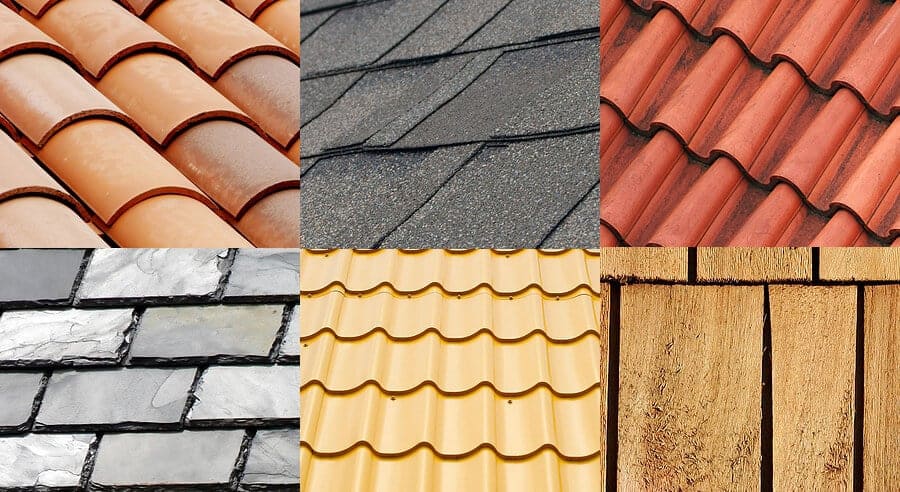Introduction
Roofing plays a pivotal role in the construction and architecture of buildings. Beyond its primary function of protection, the type of roofing chosen can significantly impact the aesthetics, energy efficiency, and overall value of a property. With a plethora of roofing materials available, selecting the right one can be daunting. This article delves into the various types of roofing materials, including shingles, metal, tiles, and more, offering an informative guide to help homeowners, builders, and researchers make informed decisions.
Shingle Roofing
Shingle roofing is one of the most common types of roofing in residential properties. Shingles are typically made from asphalt, wood, or composite materials.
Asphalt Shingles: Asphalt shingles are the most popular due to their affordability and ease of installation. They are composed of a fiberglass base mat coated with asphalt and mineral granules, which provide color and protection from UV rays. Asphalt shingles are known for their durability, lasting 15-30 years depending on the quality and maintenance.
Wood Shingles and Shakes: Wood shingles and shakes, often made from cedar, redwood, or pine, offer a natural and rustic aesthetic. Wood shingles are machine-cut and uniform in appearance, while shakes are hand-split and more rugged. While they provide excellent insulation and a unique look, they require more maintenance and are susceptible to fire unless treated.
Composite Shingles: Composite shingles, also known as synthetic or rubber shingles, are made from a blend of materials such as fiberglass, recycled paper, and asphalt. They are designed to mimic the appearance of wood or slate but are more affordable and require less maintenance. Composite shingles are lightweight, durable, and resistant to fire and impact, making them a versatile option.
Metal Roofing
Metal roofing has gained popularity due to its durability, energy efficiency, and modern aesthetic. It is available in various materials, including aluminum, steel, copper, and zinc.
Aluminum Roofing: Aluminum roofing is lightweight, corrosion-resistant, and suitable for coastal areas where saltwater can cause damage to other metals. It is also recyclable, making it an environmentally friendly option. Aluminum roofs can last 50 years or more with proper maintenance.
Steel Roofing: Steel roofing is known for its strength and resistance to harsh weather conditions. It comes in two main types: galvanized steel, coated with a layer of zinc for added protection, and galvalume steel, coated with an alloy of aluminum and zinc. Steel roofs can be painted in various colors and typically last 40-70 years.
Copper Roofing: Copper roofing is a premium option known for its distinctive appearance and longevity. Over time, copper develops a green patina that adds character and protection. Copper roofs can last over 100 years, making them a long-term investment. However, they are among the most expensive roofing materials.
Zinc Roofing: Zinc roofing is another high-end option prized for its durability and self-healing properties. Zinc roofs can last up to 100 years and require minimal maintenance. They are also environmentally friendly, as zinc is a natural material that can be recycled.
Tile Roofing
A Tile roofing, commonly made from clay or concrete, is popular in regions with warm climates. Tile roofs are known for their durability, fire resistance, and aesthetic appeal.
Clay Tiles: Clay tiles have been used for centuries and are known for their distinctive, traditional look. They are made by baking molded clay, which can be glazed or unglazed. Clay tiles are heavy and require a robust roof structure for support. They are extremely durable, often lasting over 50 years, and are resistant to fire and insects.
Concrete Tiles: Concrete tiles are a more affordable alternative to clay tiles. They are made from a mixture of sand, cement, and water, molded under high pressure. Concrete tiles can be designed to mimic the appearance of clay, slate, or wood. They are durable, fire-resistant, and can last 30-50 years with proper maintenance.
Slate Roofing
Slate roofing is known for its elegance, durability, and natural appearance. Made from natural stone, slate tiles are highly resistant to fire, water, and extreme weather conditions. Slate roofs can last over 100 years, making them a long-term investment. However, slate is heavy and requires a strong roof structure, and the installation process is labor-intensive, contributing to its high cost.
Green Roofing
A Green roofing, or living roofs, involve the use of vegetation and a growing medium on top of a waterproof membrane. Green roofs provide numerous environmental benefits, including improved insulation, reduced stormwater runoff, and enhanced biodiversity. They also contribute to urban heat island mitigation and improve air quality. However, green roofs require regular maintenance and a substantial initial investment.
Solar Roofing
A Solar roofing integrates solar panels directly into the roofing material, providing energy production alongside traditional roofing functions. Solar shingles and tiles are designed to blend seamlessly with conventional roofing materials. They offer the benefit of generating electricity, reducing energy bills, and lowering carbon footprints. However, solar roofing systems are relatively expensive and require professional installation.
Conclusion
Choosing the right roofing material involves considering various factors, including climate, budget, aesthetic preferences, and maintenance requirements. Each type of roofing material offers distinct advantages and drawbacks, making it essential to weigh the options carefully. Whether opting for the traditional appeal of shingles, the modern efficiency of metal, the classic durability of tile, or the innovative solutions like green and solar roofs, understanding the characteristics and benefits of each type will help in making an informed decision that best suits the needs of the property. By doing so, homeowners and builders can ensure the longevity, performance, and beauty of their roofs, ultimately enhancing the value and comfort of their homes.


